 W
WJohann Bernard Theodor Altum was a German Catholic priest, zoologist, and forest scientist who also engaged in popularizing his religiously grounded understanding of science.
 W
WEvangelos Apostolou is a Greek Syriza politician who served as the Minister of Agricultural Development and Food in the Second Cabinet of Alexis Tsipras from September 2015 to August 2018. From January to August 2015, he served as the Alternate Minister of Agricultural Development and Food in the First Cabinet of Alexis Tsipras.
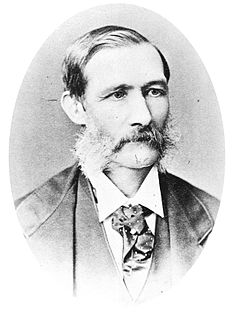 W
WSir Dietrich Brandis was a German-British botanist and forestry academic and administrator, who worked with the British Imperial Forestry Service in colonial India for nearly 30 years. He joined the British civil service in Burma in 1856, shortly afterwards became head of the British forestry administration in all of Burma, and served as Inspector General of Forests in India from 1864 to 1883. He returned to Europe in 1883, dividing his time between Bonn and Greater London. In retirement he dedicated himself to scholarly work, resulting in the book Indian Trees (1906), his magnum opus. Brandis is considered the father of tropical forestry and has also been described as the father of scientific forestry. In addition to his work in India, he also had a significant influence on forest management in the United States.
 W
WHelge Breloer née Martin was a German jurist, tree-appraisal expert, and author of nonfiction books.
 W
WKároly Bund was a Hungarian professional forestry engineer and an early environmentalist, serving as executive secretary of Hungary's National Forestry Association, from 1900 until his death.
 W
WAimo Kaarlo Cajander was the Prime Minister of Finland up to the Winter War.
 W
WHugh Francis Clarke Cleghorn of Stravithie MD, LLD, FRSE, FLS was a Madras-born Scottish physician, botanist, forester and land owner. Sometimes known as the father of scientific forestry in India, he was the first Conservator of Forests for the Madras Presidency, and twice acted as Inspector General of Forests for India. After a career spent in India Cleghorn returned to Scotland in 1868, where he was involved in the first ever International Forestry Exhibition, advised the India Office on the training of forest officers, and contributed to the establishment of lectureships in botany at the University of St Andrews and in forestry at the University of Edinburgh. The plant genus Cleghornia was named after him by Robert Wight.
 W
WJohann Heinrich Cotta, also Heinrich von Cotta, was a German silviculturist who was a native of Kleine Zillbach, near Wasungen, Thuringia. He was founder of the Royal Saxon Academy of Forestry, in Tharandt, and is known as a pioneer of scientific forestry. He was the father of the geologist Bernhard von Cotta (1808–1879).
 W
WThomas Ward Crowther is a British scientist specialising in ecosystem ecology and the chief scientific advisor to the UN's Trillion Tree Campaign. He is a tenure-track professor of Global Ecosystem Ecology at ETH Zürich where he formed the Crowther Lab. His work aims to generate a holistic understanding of the global scale ecological systems which regulate the Earth's climate.
 W
WBernhard Engelbert Joseph Danckelmann was a German forester and forest scientist.
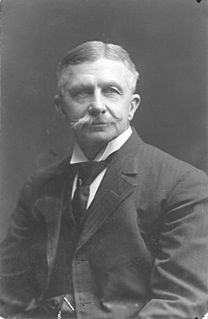 W
WBernhard Eduard Fernow was the third chief of the USDA's Division of Forestry of the United States from 1886 to 1898, preceding Gifford Pinchot in that position, and laying much of the groundwork for the establishment of the United States Forest Service in 1905. Fernow's philosophy toward forest management may be traced to Heinrich Cotta's preface to Anweisung zum Waldbau or Linnaeus' ideas on the "economy of nature." Fernow has been called the "father of professional forestry in the United States."
 W
WJames Sykes Gamble was an English botanist who specialized in the flora of the Indian sub-continent; he became Director of the British Imperial Forest School at Dehradun, and a Fellow of the Royal Society.
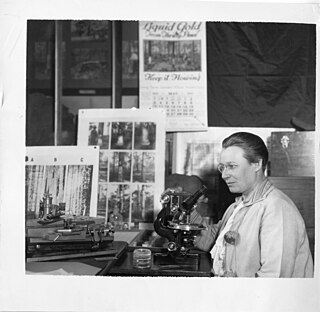 W
WEloise Gerry was an influential research scientist whose early 20th century work contributed greatly to the study of southern pine trees and turpentine production. Gerry was the first woman appointed to the professional staff of the U.S. Forest Service at the Forest Products Laboratory, and one of the first women in the United States to specialize in forest products research.
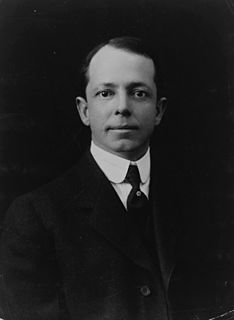 W
WHenry ("Harry") Solon Graves was a forest administrator in the United States. He co-founded the Yale Forest School in 1900, the oldest continuous forestry school in the United States. He was appointed Chief of the United States Forest Service in 1910 and served in this position until 1920.
 W
WLewis R. (Lou) Grosenbaugh was a prominent U.S. Forest Service researcher and head of the Forest Service's first Pioneering Research Unit, in forest mensuration, in Berkeley, California. Known for his contributions to the fields of forest inventory, forest measurement, and forest management, Grosenbaugh built on Walter Bitterlich's idea of estimating the density of a forest with timber cruising so that individual trees could be used to estimate various stand measures, such as volume per acre.
 W
WGeorg Ludwig Hartig was a German forester.
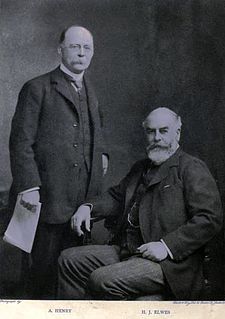 W
WAugustine Henry was a British-born Irish plantsman and sinologist. He is best known for sending over 15,000 dry specimens and seeds and 500 plant samples to Kew Gardens in the United Kingdom. By 1930, he was a recognised authority and was honoured with society membership in Belgium, Czechoslovakia, Finland, France, and Poland. In 1929 the Botanical Institute of Peking dedicated to him the second volume of Icones plantarum Sinicarum, a collection of plant drawings. In 1935, John William Besant was to write: 'The wealth of beautiful trees and flowering shrubs which adorn gardens in all temperate parts of the world today is due in a great measure to the pioneer work of the late Professor Henry'.
 W
WCharles Holmes Herty Sr. was an American academic, scientist, and businessman. Serving in academia as a chemistry professor to begin his career, Herty concurrently promoted collegiate athletics including creating the first varsity football team at the University of Georgia. His academic research gravitated towards applied chemistry where he revolutionized the turpentine industry in the United States. While serving as the president of the American Chemical Society, Herty became a national advocate for the nascent American chemical industry and left academia to preside over the Synthetic Organic Chemical Manufacturers' Association (SOCMA) and the Chemical Foundation. He was also instrumental in the creation of the National Institutes of Health. Towards the end of his career, Herty's research and advocacy led to the creation of a new pulp industry in the Southern United States that utilized southern pine trees to create newsprint.
 W
WRalph Sheldon Hosmer was Hawaii's first territorial forester, a contemporary of Gifford Pinchot who was among the group of educated American foresters that organized what is now the United States Forest Service. Hosmer later joined the faculty of Cornell University as head of the department of Forestry, where he served for 28 years until his retirement.
 W
WIoan Lazăr Kalinderu was a Wallachian, later Romanian jurist and confidant of King Carol I, who served for thirty years as the administrator of crown domains, and for three years as president of the Romanian Academy. Educated in France, he was the son of a rich and influential Greek-Romanian banker, Lazăr Kalenderoglu, and the brother of physician Nicolae Kalinderu. Like them, he was a sympathizer of the National Liberal Party, with which he debuted in politics in the 1880s.
 W
WBenjamín Máximo Laguna y Villanueva was a Spanish botanist and entomologist.
 W
WWalter Liese is a German forestry and wood researcher and wood biologist.
 W
WMargaret D. Lowman, Ph.D. a.k.a. Canopy Meg is an American biologist, educator, ecologist, writer, explorer, and public speaker. Her expertise involves canopy ecology, canopy plant-insect relationships, and constructing canopy walkways.
 W
WBart Muys is a Belgian professor of forest ecology and forest management at the KU Leuven. His research focuses on the ecosystem functioning of tree diversity, the ecology of forest restoration and the evaluation of sustainability in forests and bioenergy systems. He is one of the most cited scientists internationally in the field of silviculture and forest management.
 W
WNalini Nadkarni is an American ecologist who pioneered the study of Costa Rican rain forest canopies. Using mountain climbing equipment to make her ascent, Nadkarni first took an inventory of the canopy in 1981, followed by two more inventories in 1984.
 W
WDragutin Drago Radimir was a forestry engineer, senior government advisor, forestry expert, associate scientific consultant to Forestry Encyclopedia in Yugoslavia.
 W
WJulius Theodor Christian Ratzeburg was a German zoologist, botanist, entomologist, and forester.
 W
WIsrael af Ström was a Swedish botanist and forestry researcher. He introduced systematic forest management in Sweden and initiated the founding the Swedish National Forest Institute.
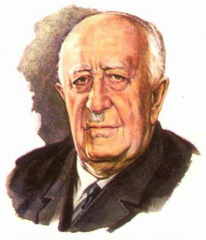 W
WVladimir Nikolayevich Sukachev was a Russian geobotanist, engineer, geographer, and corresponding member (1920) and full member (1943) of the USSR Academy of Sciences. His wife was Henrietta Ippolitovna Poplavskaja.